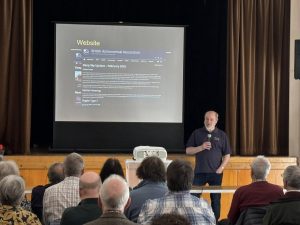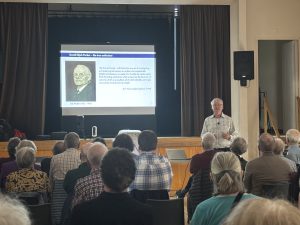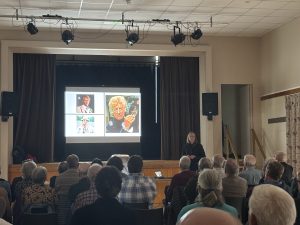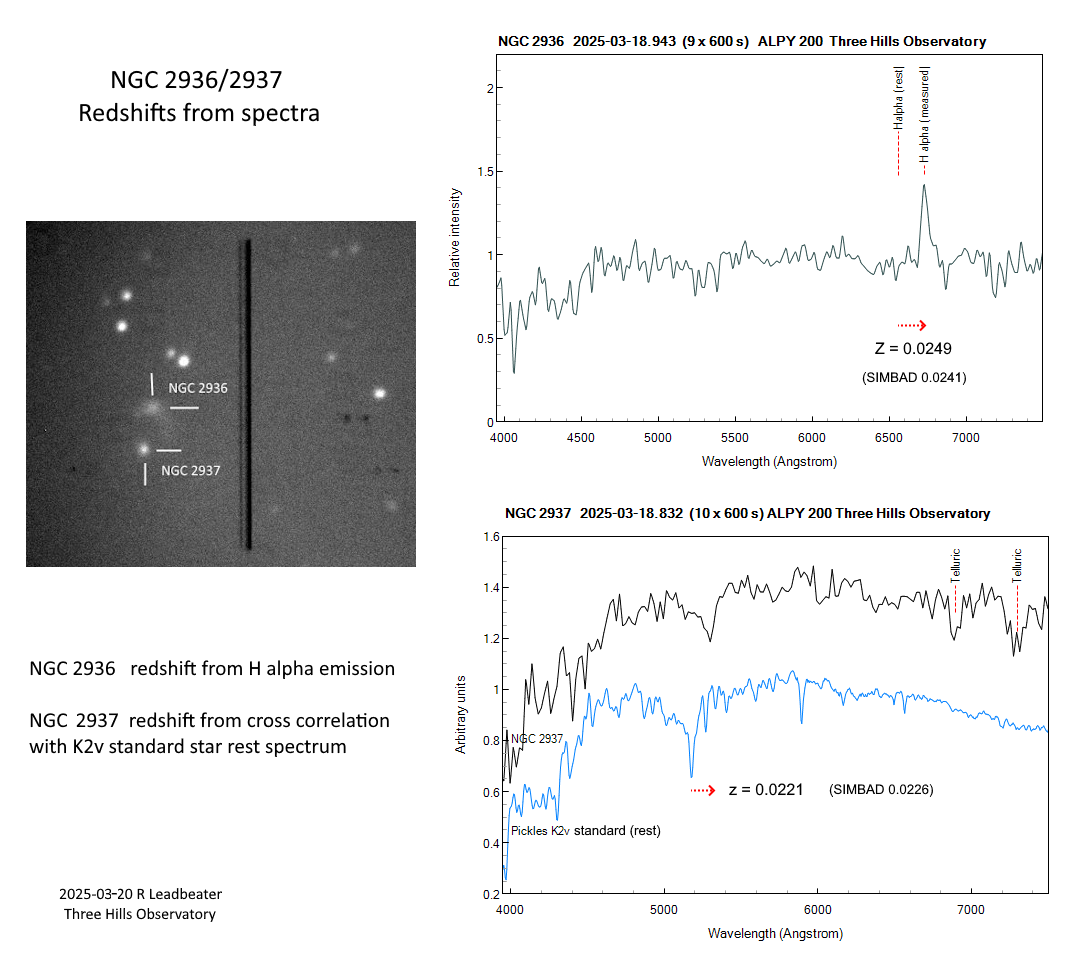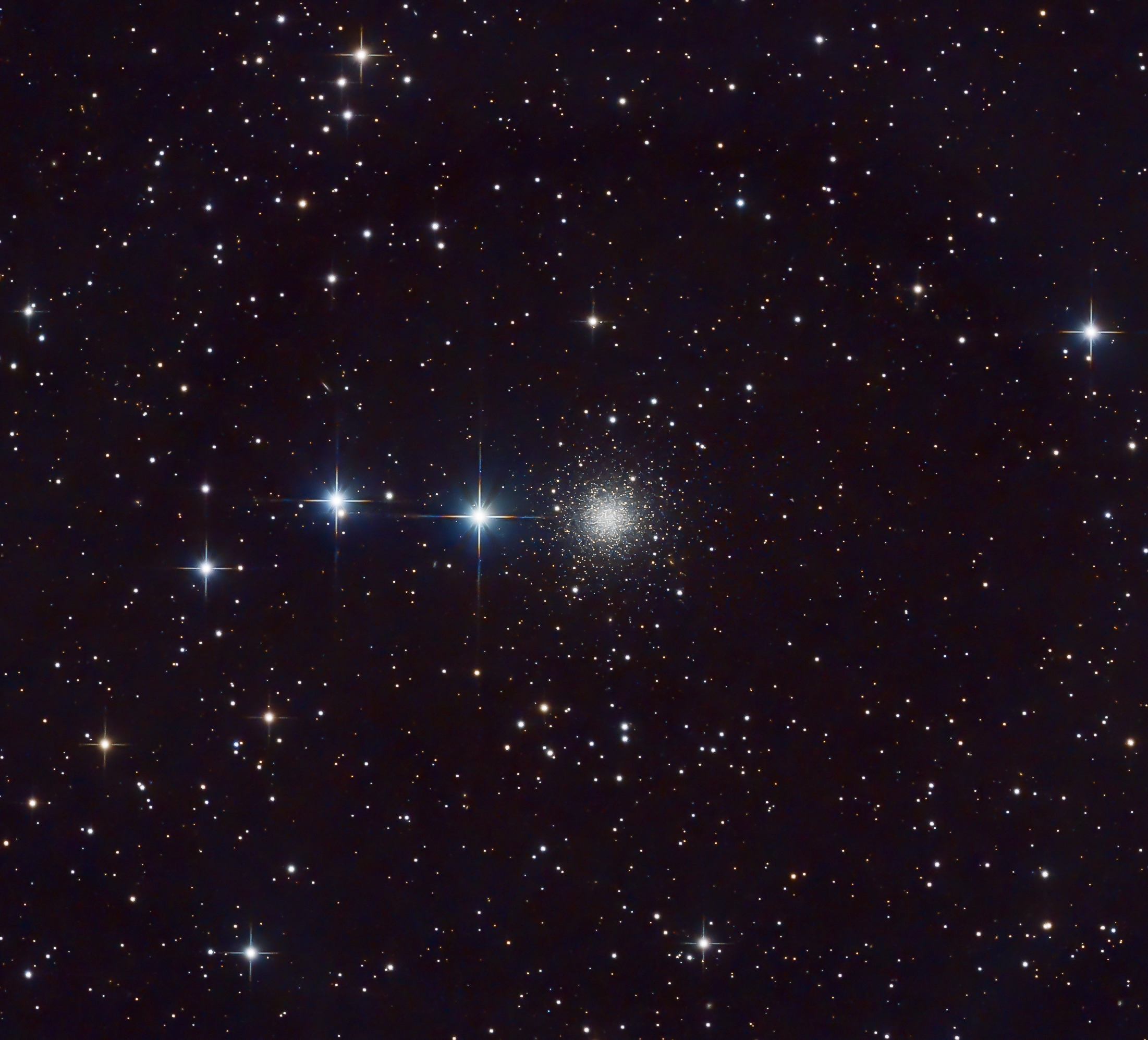2025 April 5
Deep Sky Update – March 2025
Sorry for the delayed update this month – time just seems to evaporate sometimes. March did not have the best observing weather for me, but April has started well. I hope it continues.
Deep Sky Section Meeting 2005
My trip to Manchester for the section meeting went without any big stresses. All planes, boats and trains went to time. It was great to meet so many deep sky enthusiasts on the day. We had about 70 attending so many thanks to those of you that managed to make it to Goostrey. And a big thanks to our speakers on the day; Callum Wingrove, Richard Sargetn, Nick James, Jeremy Shears, Bryan Lawrence and Prof. Rob Jeffries from Keele. Also much thanks to Macclesfield Astronomical Society (chair Martin Butcher) for hosting the event.
Here are some photos from James Dawson and the obligatory group photo was taken by Alan Dowdell. Alan also mentioned he had volumes of English Mechanic and a 16-inch mirror available for anyone interested. He has had some enquiries, so looks like these may now be taken.
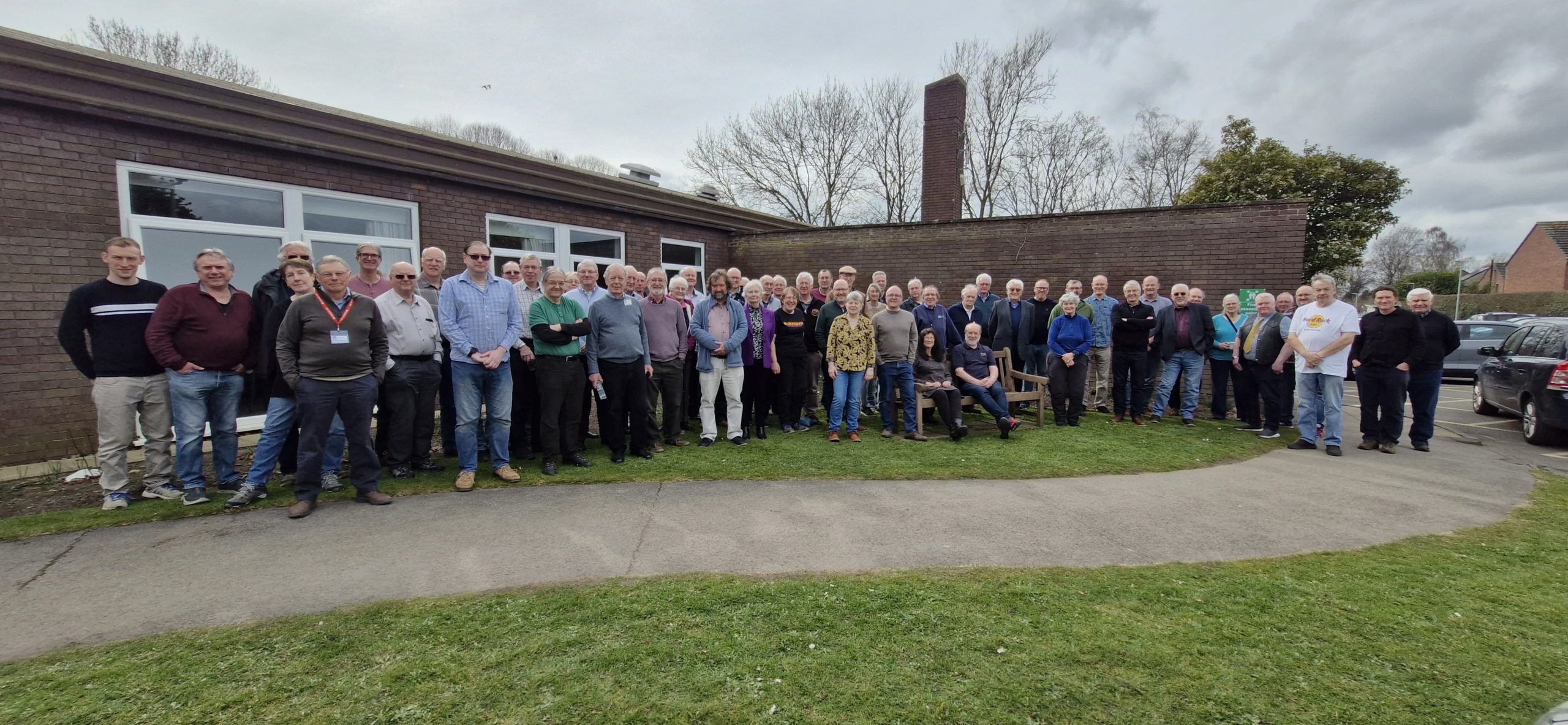
I am thinking of a location in the south for next year’s meeting sometime in March, so if your local society would like to be the host please let me know.
Variable Nebulae
Richard Sargent has agreed to take on the role of Variable Nebula Coordinator from Nick Hewitt. Much thanks goes to Nick for doing this over many years. Richard gave a very interesting talk at the section meeting on Hind’s Variable Nebula, and would be especially interested in any observations people have of it from 2015 and earlier. FITS files would be preferred, but anything you have in your archive might help fill in some gaps on the potentially period fluctuations of this nebula. If you would like to get in touch with Ricahrd about Hind’s observations or getting more involved in variable nebulae observing, you can email him at vne@britastro.org
Grant Privett has alerted (beginning of April) that the variable star V347Aur was on the rise. It would be really worth observing it and the variable nebula associated with it. Ideally 30 minutes exposure or longer unfiltered or V would be useful to try to pin down how big the light time is between the cloud and the stars.
Smart-Telescope News
I see that the much anticipated EQ Mode for the Seestar has been released. I am not sure how much it might improve images made with a Seestar, but should make longer sub-exposures practical, and perhaps less dropped frames.
And also many thanks to Paul Whitmarsh who shared this website – an idea for anyone thinking of an automated smart-telescope setup (here for a Dwarf). https://www.metro.ws/dwarf/
March Object of Interest
Many thanks to everyone that had a go at March’s object(s) – NGC 2936 (the Penguin)and NGC 2937 in Hydra. Alan Thomas captured it with his Unistellar EVScope, and there were nice images from Tim Haymes, Iain Cartwright, Ivan Walton, and Paul Whitmarsh (Seestar S50). Robin Leadbeater managed to take spectra of the two galaxies and measure the red-shift. Robin writes:
“The redshifts were measured from the spectra based on the clear H alpha emission line in NGC 2936 and by cross correlating the spectrum of NGC 2937 with a spectrum of a K2 star to replicate the aggregate spectrum of the stars in the galaxy.
The redshifts are similar suggesting that they are indeed at a similar distance and moving together. There is however a few hundred km/s radial velocity difference between the two galaxies implying the galaxy cores are moving relative to each other. There are no recorded distances for the two galaxies in the NASA Extragalactic Database but using the redshift and Hubble’s law suggests a distance of ~300Mly.”
Here is Robin’s poster.
Object of Interest for April
Jim has suggested for April the planetary nebula LoTr 5 (Longmoore-Trtton 5) in Coma Berenices. Jim writes: “It’s quite a challenge, being very faint, but it’s large and with a very bright central star that has interesting characteristics of its own. It’s in an unusual location for a PN, high above the galactic plane. and only 1.5 degrees from the galactic north pole.
It’s a good clear night here and I’m actually just back in from looking at it. I can just, barely, detect any nebulosity, so this is mainly one for imagers I think, with the possibility of some interesting wide field views in this galaxy-rich area of the sky.”
I also had a clear night early April and set my Seestar on it, and with an 80 minute stack, I think it was just about visible in the Seetar stack (using averted imagination). I have yet to have a chance to process the raw images.
Picture of the Month
My pick for March POTM is this super image of NGC2419, the Intergalactic Wanderer, by Thomas Wade.
And Finally
After the equinox the nights are getting noticeably much shorter. Maybe I will get a few weeks of dark nights before the ‘simmer dim’ arrives. I certainly hope to make best use of any clear nights that we get.
Clear, dark skies,
Callum
https://britastro.org/wp-content/uploads/2025/04/NGC2419.jpg
https://britastro.org/wp-content/uploads/2025/04/NGC2936-7_BAADSS_poster.png
https://britastro.org/wp-content/uploads/2025/04/20250322_133511-scaled.jpg
https://britastro.org/wp-content/uploads/2025/04/dss-meet-cp-JD.jpg
https://britastro.org/wp-content/uploads/2025/04/dss-meet-js-JD-scaled.jpg
https://britastro.org/wp-content/uploads/2025/04/dss-meet-rj-JD-scaled.jpg
| The British Astronomical Association supports amateur astronomers around the UK and the rest of the world. Find out more about the BAA or join us. |

